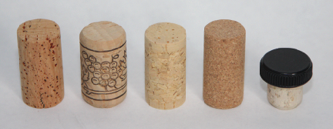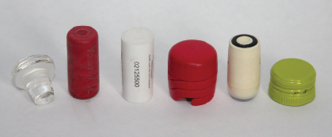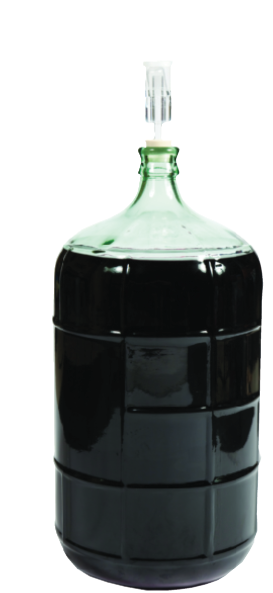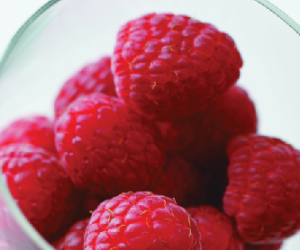 As I walked about the roomful of wine following April’s WineMaker International Amateur Wine Competition judging, I was reminded of how little thought is given to closures. Winemaking problems notwithstanding, this could confirm the fact that I found far too many wines to be oxidized.
As I walked about the roomful of wine following April’s WineMaker International Amateur Wine Competition judging, I was reminded of how little thought is given to closures. Winemaking problems notwithstanding, this could confirm the fact that I found far too many wines to be oxidized.
There were recycled screw caps, both aluminum from wine bottles and plastic from water bottles, bar-top corks, cheap synthetics and even poor-grade corks, both natural and agglomerated. Unless you bottle wine today and start drinking it “tomorrow” with no intent of aging, these closures are not recommended for wine meant for aging, even for as little as six months, and should never be used for shipping wine to a competition across the country where temperatures can swing wildly.
Here, we review the different types of closures available to home winemakers with a view to understanding oxygen permeability and the impact on wine quality and aging potential. Let’s start with an overview of how oxygen works its way in bottled wine.
Oxygen in bottled wine
There are three sources of oxygen that can affect wine quality and aging potential: dissolved oxygen, headspace oxygen, and atmospheric oxygen.
Dissolved oxygen (DO) is the amount of oxygen already dissolved in wine at bottling and is the main determining factor of quality and ageability. The concentration of DO at bottling mainly depends on winemaking practices and type of wine. Multiple rackings and aerations or heavy pumping, for example, will increase oxygen uptake, and inevitably, the long exposure to air at bottling contributes to additional DO quite significantly. By virtue of their high polyphenol content, red wines can consume vast amounts of oxygen compared to whites and therefore typically have lower DO contents at bottling.
Headspace oxygen (HO) is the amount of oxygen in the headspace, or ullage — that “empty” volume between the wine and cork in the bottle. This little volume may seem innocuous, but it greatly affects wine. In commercial winemaking, HO is eliminated by flushing bottles with an inert gas, typically nitrogen. Although this is possible in home winemaking, it is generally too time-consuming, complicated and expensive.
The sum of DO and HO is referred to as total package oxygen, (TPO), and is now closely measured and monitored in commercial wine production. TPO should be less than 2 mg/L and ideally under 1 mg/L; however, in home winemaking where oxygen controls are limited, values are closer to the 10 mg/L range and sometimes higher. This is the main reason why homemade wines do not have the aging potential of commercial wines.
Atmospheric oxygen is the amount of oxygen that permeates in and around closures and into bottles. There is a finite amount of oxygen already trapped within cork material, and the amount is higher in natural corks. However small atmospheric oxygen ingress might be, it is a far more significant factor than meets the eye. The rate at which atmospheric oxygen enters bottles is referred to as oxygen transfer rate (OTR).
Closure OTR has become the hot topic of research and debate now that the TCA issue — 2,4,6-trichloroanisole responsible for corked wine — seems to be under control. Manufacturers now provide corks and screw caps with different OTRs to meet the needs of winemakers and their wine styles.
Why is all of this important?
Aging potential (and wine’s protection against oxygen) is a function of TPO, OTR and, of course, the level of free SO2 in wine. There are now mathematical models that use these parameters to predict the shelf-life of wine. As an illustrative example, consider two identical wines bottled under identical conditions (i.e. headspace purged, same DO and FSO2, etc.) but one using a closure with an OTR 10 times the other; the wine with the lower OTR closure will age 10 times longer. OTRs can be hundreds or thousands of times different, and so, the impact on aging potential is significant. As for HO, the typical headspace volume can reduce aging potential by as much 30% if not purged. And bottling at, for example, 30 mg/L FSO2 instead of 35 mg/L can cut the shelf-life by almost half.
Need any more convincing on the importance of managing oxygen during winemaking and, especially, at bottling?
Types of closures
There are two major types of closures: stoppers and screw caps.
Stoppers are inserted into bottles and include natural, agglomerated and composite, or technical, stoppers all manufactured entirely from cork material harvested from cork oak, synthetic stoppers, and glass stoppers though these are not available to home winemakers.
Natural stoppers are punched out as a single piece from the cork bark and are graded based on their porosity and level of imperfections. The best natural cork stoppers have low porosity, few imperfections, if any, and extremely low OTRs. Of course, they are also the most expensive. Good-quality corks provide a good compromise between OTR and cost.
Agglomerated stoppers are manufactured using coarsely or finely ground cork granules derived from virgin or rejected cork, from manufacturing leftovers, or from other cork by-products, i.e. the material has a higher rate of defects. The granules are glued together with an acid-tolerant binding agent, such as food-grade polyurethane, and then hot-press molded into their cylindrical shape. Imperfections can be corrected by colmation, the process of applying cork dust and a binding agent to fill those crevices and improve stopper performance and appearance. Those agglomerated stoppers manufactured from very finely ground granules are also known as micro-agglomerates. Affordable, good-quality agglomerated and micro-agglomerated corks are now available with low OTRs.
Technical stoppers are composites manufactured with an agglomerated body and then finished with natural discs at one or both ends. Twin-disc technical stoppers, also called 1+1 stoppers, have a natural disc at each end while champagne-type technical stoppers have two natural discs at one end; the idea is that the end with a natural disc is the only material in contact with wine during bottle storage. Technical stoppers are not cheap, but they have very low OTRs and almost eliminate the risk of TCA contamination.
Synthetic stoppers are manufactured entirely from one or more polymers. When synthetic stoppers were first adopted as an alternative to natural corks to solve TCA problems, and really before there was any real momentum with screw caps, they introduced a new set of problems: significant flavor scalping coupled with polymer material now transferring off-aromas and flavors into the wine, high OTRs leading to premature oxidation, leakage due to poor insertion into bottles or form ridges left by insertion equipment, and frustration (and broken corkscrews) over how difficult they were to retrieve from bottles. But there has been significant progress in synthetic materials and production technologies, and manufacturers now provide a range of synthetic stoppers that attempt to alleviate problems of the past.
Polymers used in synthetic stoppers now include poly-vinylidene chloride (PVDC), polyethylene (PE), styrene-butadiene-styrene (SBS), and ethyl vinyl alcohol (EVA), and are manufactured by injection molding or by extrusion, or a combination of both. In injection molding, the material is injected into a cork-shaped mold. In the extrusion process, the material is continuously fed through a cylindrical die to form the core of the stopper and then cut to desired length. Some corks have a foam core and a thermoplastic elastomer sleeve forming the outer skin. The sleeve is also manufactured by extrusion and applied over the foam core immediately following extrusion of the core, hence why this process is termed co-extrusion, and then thermally bonded to the core. Co-extruded stoppers are also manufactured with different OTRs to meet closure needs of winemakers.
The Zork stopper is another synthetic closure available to home winemakers but with very limited use. The stopper consists of a low-density polyethylene (LDPE) body and foil liner under a protective cap with a tear-off tab. Once the tab is pulled and removed, the Zork stopper looks like a bar-top stopper. Tests on Zork stoppers have shown low OTRs.
And another very interesting synthetic stopper, the Guala Seal, also known as AS-Elite, is a joint effort by Italian company Ardea Seal S.r.l. and M.I.T. (Boston, Massachusetts). The stopper comprises three main parts: an internal chassis designed to eliminate what is called “creep” in materials science and which holds the body material in place, a compressible thermoplastic elastomer body, and a convex-shaped polypropylene “shield” at one end that will be in contact with the wine. Creep is the tendency of a solid material to move slowly or deform permanently under the influence of stresses, and occurs as a result of long-term exposure to high levels of stress that are below the yield strength of the material.
Screw caps, or twist-offs, are a relatively new type of closure for wines introduced in the early 1970s, although the technology has been in use for a long time in many other types of foods and beverages such as olive oil, carbonated drinks and spirits. They quickly became in favor as an alternative to both natural corks in light of the high incidence of cork taint in wine and to synthetic stoppers because of high OTRs and off-aromas and flavors because of stopper material. Screw caps now have some of the lowest OTRs of all stoppers. But the technology to apply screw caps to bottles is not yet available to home winemakers, and reusing screw caps from wine bottles or bottled water is not recommended as the oxygen barrier material under the cap is imperfect once used.
Bottling best practice
Here are my top seven best practices for bottling wine at home for minimizing oxygen impacts and increasing wine quality and aging potential.
1. Monitor your wine’s FSO2 level throughout winemaking and maintain a FSO2 level based on your wine’s pH. For help with this, use WineMaker’s Sulfite Calculator, found on this website and invest in a good SO2 meter that also measures total SO2 (TSO2). FSO2 and TSO2. This will give you a good indication of how SO2 is being consumed and becoming bound.
2. Limit your wine’s exposure to air during bottling and bottle as quickly as possible while minimizing any oxygen uptake and especially avoiding any rough handling.
3. Use a good bottle filling device that minimizes oxygen uptake; those that fill bottles bottom-up or by flowing wine down the side of the glass are the best.
4. Use good-quality stoppers with a minimum length of 1½ inches (38 mm). Most cork stoppers are now shipped in bags preserved with SO2 gas, and so, there is no need to sanitize corks if these have been properly stored. Use corks within 6–12 months; after that, they dry out and cause leakage.
5. Invest in a good floor corker, one that applies equally distributed pressure around the cork during insertion into the bottle. A good corker does not create any ridges along the length of the cork, which could otherwise cause leakage.
6. Once bottled (when using stoppers made from cork material), leave the bottles upright for two days to allow the cork material to re-expand properly, and then invert the bottles or store horizontally.
7. Store bottles in a cool cellar at 55 °F (13 °C) and a humidity level in the range of 55–75% to avoid cork material drying up during aging.
Now let the awards flow in!


There are many different cork styles available. Pictured from left to right are: (top) natural, colmated natural, agglomerated twin-disc, micro-agglomerate, bar-top, (bottom) glass, synthetic, extruded synthetic with foam core and thermoplastic elastomer sleeve, Zork stopper, Guala Seal, and screw cap.







